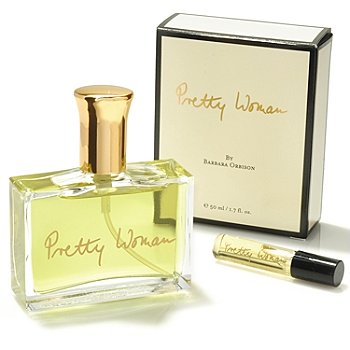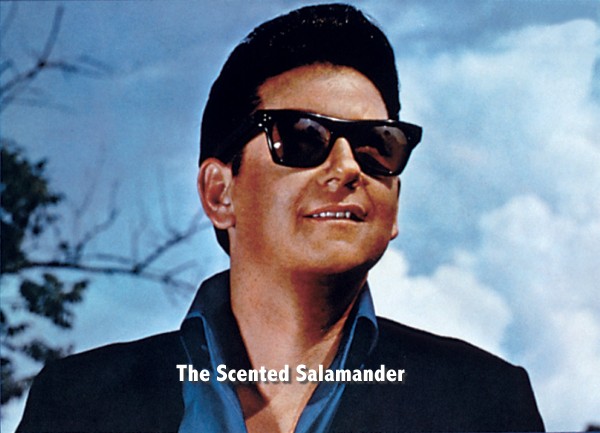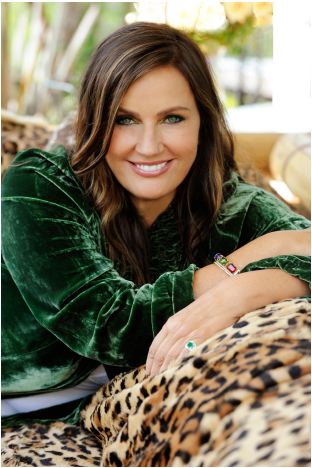Barbara Orbison Pretty Woman (2009): Soft Olivine-Green Oriental {Fragrance Review} {Niche Celebrity Fragrance}

Pretty Woman is the debut fragrance of Barbara Orbison, the widow of singer Roy Orbison. It was named after the 1964 hit song "Oh, Pretty Woman" which was later made part of two film soundtracks, American Graffiti (1973) and Pretty Woman (1990), a testimonial to the catchiness and increasing popularity of the tune...
Barbara Orbison explained that her perfume was created after she went on a perfumery pilgrimage to France in order to nail down "the note" (in the sense of the main accord-idea here) that she wanted to get based on her experiences as a DIY perfumer. There might be a Pretty Woman's Man in the future judging by a precedentn as Roy Orbison wore a masculine version of the same scent.
"The fragrance that I personally created, my own signature fragrance, became popular among my friends. In my travels, I met many people who stopped me and asked me what perfume I was wearing. That's when I decided I wanted to share my secret with women everywhere. I even blended a special version for my husband Roy.
I am so happy to share my secret, my perfume, "Pretty Woman," with all of the "Pretty Women" everywhere."
Pretty Woman edp can strike you at first as a bit tricky to classify because it obviously was not created by a marketing panel with trends in mind.

For this reason, it has a wild-card quality, something a bit unexpected in the current context. If it is part of any social current, it would be for me the one represented by those solo niche perfumes which are developed generally by a woman and tied to a unique life story. It is a way for some glamazons to distill an experience and make sense of their committment to a cause. In this case, Barbara Orbison is keeping the flame of memory of her late husband alive in the form of a signature perfume.
After smelling it repeatedly, I would orient the reader in thinking of the feels of Anne Pliska and Germaine Monteil II, but my first reaction was to experience difficulty in classifying it. It is outside of the trends even of niche perfumery. It is more like an isolated voice to me than a pop song.
A note of benzoin readily escapes from the cap of the flacon pointing to a warm personality. The fragrance opens on interesting top notes of rich candied Christmas-y fruits seemingly served with Russian plum jam. It is darkly fruity at first.
I get a visual of looking at a table prepared with tea and a cup full of dates bursting at the seams with natural honey. Before that it felt like a dream slideshow where you were rapidly traversing a gallery of ancestors' portraits where you thought you had time to see a picture of Shalimar and one of Mitsouko hung on the wall but as if you were looking at them through the distorted view of a fisheye. In the very end, I realize there must have a portrait of Emeraude too (an ancestor of Shalimar) but that I didn't have the time to spot during this fast oniric trip. The bergamot-oriental base contrast is here, as well as the deep, candied fruity aspect of Mitsouko, but more like fugitive glimpses and recycled art than consistent, academically polished quotes.
The opening part of the perfume is intriguing in light of the market production because while it does use a familiar, alluring-for-the-contemporary-consumer fruity register, it abandons all pretense to do a bright, sparkling pop and neon fruit à la Escada and Andy Warhol. Instead it calls attention to a darker, more grown-up and wintrier fruity range.

At the same time, there is a cooler, greener facet to the scent which adds an understated sense of crispness to the mix without feeling pine-y. There might be geranium too and a hint of anise betrays its presence. There is no figurative motif of Christmas although a certain Christmas-eve atmosphere can be evoked. The green is angelica-soft and drowns in generous, cool-toned amber counterbalanced by bergamot. The fragrance then melts and rounds off all angles. It feels in general like a variation on amber only tinted in olive green color, like the jus in the bottle. Woody, slightly dry and fibrous notes (Atals cedar) continue to tilt the fragrance in the direction of less mainstream. The scent turns out to be all about ambery resins with dark, dry, candied fruity nuances and citrusy counterpoints. It is also sweetened up by vanilla and lit up by a bit of lemon, and perhaps orange, but really, like an understated ray of sunshine in winter. The ambergris stands out a bit thanks to its salty, animalic, fish-like dry note. The sillage after several reapplications is a killer; it is complex, with light chypré touches. It evokes the sensation of a slow burning smoldering fire with nuances of roasted chestnuts. Even later on, it smells distinctively of apricot-y osmanthus and you understand what makes the scent be soft.
While going by the description of notes, one might have expected more prominence given to the floral core of stargazer lily, red rose and carnation, the perfume is so blended-in in feel that even the main flowers are quasi imperceptible and near invisible. If you strain your attention, you will get a tart, petal-y red rose and spicy nuances of carnation and lily, but this is not the point. The composition boasts "hundreds" of floral and spicy ingredients, which is a style of perfumery that can be seen retrospectively as being quaint for followers of Edouard Roudnitska, Jean-Claude Ellena (except for his first period, see First by Van Cleef and Arpels) and other modernists privileging short, spare formulas.
I have had the opportunity to try a German perfume called Steffen Shraut edp (2007) which also felt this attraction for the rich-ingredient list (120.) Its qualities hit me especially in its superlative projective power, i.e., its sillage. Pretty Woman is likewise at its most alluring as a sillage that you make acquaintance with when you re-enter the room you left.
It is a different way of approaching perfumery. The multitude of notes is usually associated with a belief in blended-in-note aesthetics. In this school of perfumery which is the opposite of the Roudnitska one, any note that comes to the fore is considered a flaw. The jus should feel seamless yet invisibly sustained by the multiplicity of points of views of the notes giving way to the one overarching point of view of the perfumer who wants to achieve mostly balance, harmony, sensuality and in this case, unctuosity. A Roudnitska-ite would call it a brown mess as a result of overmixing of the palette of colors, a classicist would feel the rich velvety material of a perfume was recreated as it should be.
Pretty Woman is more a perfume to make a impression on yourself and others than one of those narrative perfumes that keep you entertained as you decrypt them like mini novels. Its mission is to beguile, not to stimulate your thoughts. For the wearer, it wears close to the body like a warm and green aura yet it also leaves a great sillage. Seeing how Barbara Orbison loves to dress in green emerald color, I am sure the effect is willed.
Roy Orbison contest info to celebrate the singer's anniversary of his death on December 6, 1988. Go to,
"Facebook.com/RoyOrbison to celebrate the life of this great singer, songwriter, musician, husband, father, and friend. Please leave your favorite Roy Orbison memory, story, or photo in our forum. The 10 best fan submissions will be chosen and displayed on the front page of RoyOrbison.com. Winning fans will also receive exclusive items from the Roy Orbison Store."









